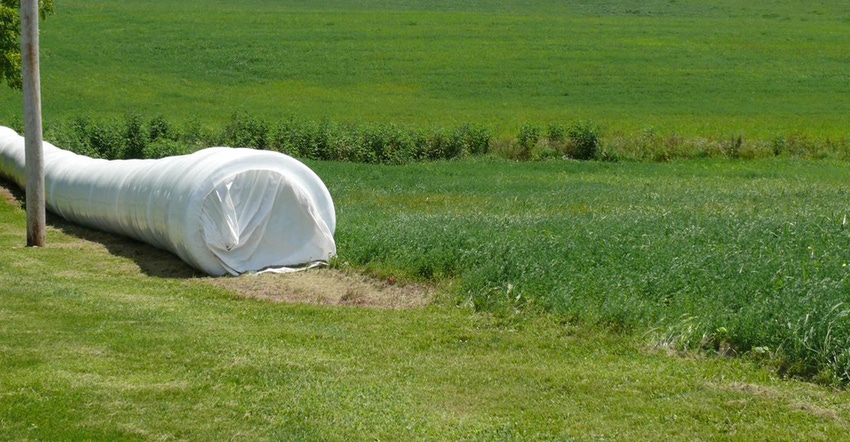June 3, 2019

Earlier this spring, Iowa State University agronomists discussed using the Predictive Equations for Alfalfa Quality method to help determine when to harvest first-crop alfalfa. Now entering June, looking at the PEAQ measurements made around the state, farmers are getting close to taking the first crop of alfalfa. However, the wet conditions could present some challenges with putting up the first cutting of alfalfa in a timely fashion and maintaining feed quality.
Brian Lang, ISU Extension field agronomist in northeast Iowa, offers the following observations and recommendations for hay producers.
Considerations for making baleage
“With likely having a short window to put up the first cutting of alfalfa, one potential option for harvesting the first cutting is to make baleage,” Lang says. “Like anything, there are pros and cons to consider with baleage. Some considerations with baleage include proper timing of harvesting and storing of the forage.”
You should target the bales to be 50% to 60% moisture, he says. Generally, most baleage can be made within 24 hours of cutting and will need to be wrapped within 12 hours of baling. Like corn silage, baleage put up too dry will slow fermentation and result in unwanted bacterial growth, mold or heat damage. If put up too wet, a cold fermentation may occur leading to “stinky” baleage. “That’s caused by the presence of butyric acid, along with the degradation of proteins into some unfavorable metabolites and a slimy texture,” Lang says. “These unwanted consequences will likely lead to compromised feed intake, reduced nutrient quality and, in some situations, animal health issues.”
Making baleage similar to ensiling
Lang adds, “Because plant sugar is a requirement for ensiling, using good-quality standing forage is best. Forage that has been rained on after cutting, as well as excessively mature standing forage, will not optimize the ensiling process. In addition, bale weight and forage density should be considered. Oxygen is the enemy when it comes to ensiling and a bale that is ‘too loose’ can lead to mold among other problems. Thus, the tighter the bale the better.”
A minimum of 30 days is needed for the bales to fully ensile. “Another consideration with baleage is that while it does offer many advantages, it is an expensive investment and can result in poor return on investment if not done right,” Lang says.
For more information on baleage considerations and what is best for your operation, consult with your ISU Extension beef specialist and see Making the Switch to Baleage, IBCR 202.
About the Author(s)
You May Also Like






